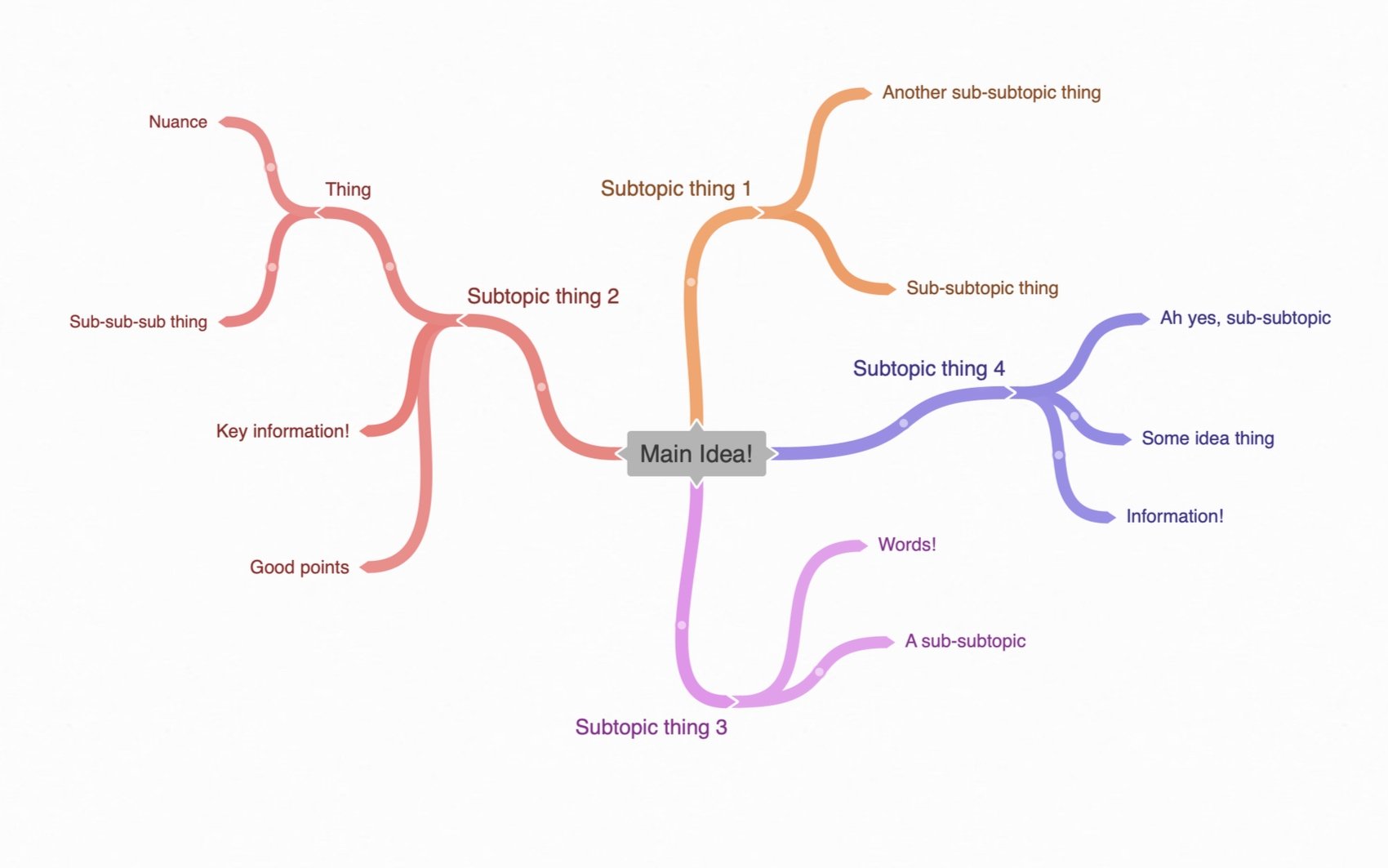The Music Mind Map Handbook (a 5-step guide + examples)
Organizing your tasks and goals in a strategic way sounds pretty straightforward, but it’s a seriously powerful move – especially when that organization is in a visual format. So welcome to the music mind map handbook.
We’ll be covering a step-by-step guide on how to create your own mind map for music as well as some essential tips and examples for inspiration.
I hope this post adds some serious value for you. Because leveraging the power of mind mapping has some pretty awesome benefits.
So let’s kick things off and dive right in.
Outline
What Is A Mind Map?
Sweet Mind Mapping Benefits for Creativity
How to Create A Music Mind Map (5 Steps)
Using A Mind Map for Music: Some Examples for Inspiration
What Is A Mind Map? Mind Mapping vs. Brainstorming
Mind mapping is a bit of a buzzword and pops up a lot in entrepreneurial and business strategy discussions. But the truth is, anyone can use it.
It’s a powerful tactic to use as a musician or creative. So what is it exactly?
Music Mind mapping is like a visualized projection of brainstorming, with a bigger focus on the reverse engineering process. It’s like drawing out information and ideas in a visually organized way.
You can imagine a mind map as like a spider web that categorizes ideas, components and objectives in a visually clear way.
In the Getting Started section below, I’ll have some photos for reference as an example I use to follow along with.
But first, let’s review a few of the benefits of mind mapping for music.
Some Sweet Mind Mapping Benefits for Creativity
Organization of thoughts and ideas
Prioritization of topics and tasks
Keeps the big picture in mind so you don’t get lost in the trees and miss the forest
Exposes issues and bottlenecks quickly
Improves the workflow of your music, songwriting or creativity
Adds structure to the often mood-based chaos of creativity
Helps you remember your tasks, to-dos and ideas
Getting Started: How to Create A Music Mind Map (5 Steps)
The steps below are fairly intuitive. And I’ve included a personal example for each of the main steps (that require some type of written action).
So I definitely recommend you follow along with your own mind map, filling it in as we go.
And of course, should you have any questions, feel free to drop a comment below!
1. Establish Your Mind Mapping Goals + Think of Idea(s)
It’ll help to have your goals and some ideas for mind mapping dialed in.
So consider these questions to help clarify why you want to try mind mapping for music and what you want to focus on first:
What’s a musical topic or theme that I’m interested in that could use some clarity?
What are my weaknesses that I need to better understand and improve upon?
What’s something in music I want to better understand?
Why do I want to try mind mapping? What are my objectives and expectations?
What are my musical interests and inspirations?
What are my musical goals?
If you’re still needing some inspiration, you can check out the next section below where I provide some examples of how musicians (or music enthusiasts) can use mind mapping.
2. Choose Your Mind Mapping Medium
There are many different ways to create your mind map. Some of these may feel kind of obvious, but it’s worth mentioning.
Because when I first started, I thought there was some magical software or template I needed to use.
Nope. Just the classics work fine here.
So here are some different options for making mind maps:
The old school method – pen and paper
An upgraded old school method – a designated notebook or mind mapping journal
A stylus or tablet with a note taking app (such as Notability or OneNote)
A mind mapping software
If you’re just starting out and have never done a music mind map before, I would choose whatever you’re most comfortable with.
At the end of the day, it’s the process and completed map that matters most, not the medium.
3. Jot Down Your Main Topic, Task or Central Idea
The first thing we need to do is write down our main topic or task.
This should be centered on your page with a circle (or whatever shape you prefer) around it. For the rest of the steps, you can follow along with my own example.
So let’s say I want to better organize my music production process. For this idea, I would write down “Music production” as my core objective.
For this example, I used the software Coggle.it — it’s free. :)
4. Branch Things Off Into Related Subtopics, Components or Tasks to Complete
Once your main topic is written down, you’ll want to brainstorm and create related subtopics that branch off from this idea.
These can be the tasks that need to be completed or the main components that make up the core idea.
This process is very much like reverse engineering – that is, breaking down a complex thing into simpler components to better understand its structure, how it was made and how to recreate it.
For my “Music production” example, my subtopics could include things like:
Song concept or theme
Top line melody
Lyrics
Making the arrangement and chord structure
Goal and/or purpose of the song
Target audience for the song
5. Further Unpack Your Subtopics Into Sub-Subtopics
We’re not done reverse engineering yet.
Each subtask can usually be broken down further into micro steps, tasks or components.
It’s like a building, where the main idea is the skyscraper, the first branches may be the steel beams, walls and windows. From here, we could then branch things off into electrical and HVAC.
We could keep branching things off and reverse engineering a skyscraper all the way to materials sourcing and even location scouting.
But let’s go back to my “Music production” example. Let’s dig deeper.
Here are the sub-subtopics of my music mind map:
Sound selection
Vocals and harmonies
Effects, vocals and instruments processing
Adding in nuances and ear candies
Mixing
Mastering
Promotions and marketing
Release strategy and date
Metrics to measure (likes, streams, etc.)
BONUS: Some Helpful Tips for Mind Mapping Music Like A Pro
As you can see, mind mapping can get pretty detailed, depending on your task and goals.
So don’t be afraid to keep branching off and dialing in on certain points or areas.
Here are some helpful tips for music mind mapping success:
Color code things and add annotations to highlights key things or to make notes
Test your mind map to see if it works
Keep things flexible and adjust when necessary
Use an erasable pen – if you’re writing things on paper
Don’t stress about order when first writing things down
Look for unique connections between your dots and different branches
Using A Mind Map for Music: Some Examples for Inspiration
Now that we know the basics for creating a mind map, let’s explore some examples.
I hope some of these examples are ideas you can use now. If not though, I hope they at least inspire you with some more mind mapping topics to explore.
Because in truth, the options are endless. But here are some examples for inspiration:
Learn music theory
Learn a new instrument
Map out your music production or songwriting process as a template
Create and grow your musician brand
Diagram music genres and artists
Find gaps, opportunities and new ideas
Learn how to make an instrument
Map out a famous musician’s songs to better understand their process and strategy
Creating a quality bedroom music studio
Organizing your music blog topics and content silos
The process and strategy of writing lyrics
A vocal chain or effects processing template
Preparing for a live gig or live stream
Breaking down some large future music goal or dream into smaller components, tasks and steps to complete
Want More? Check Out These Sweet Reads!






